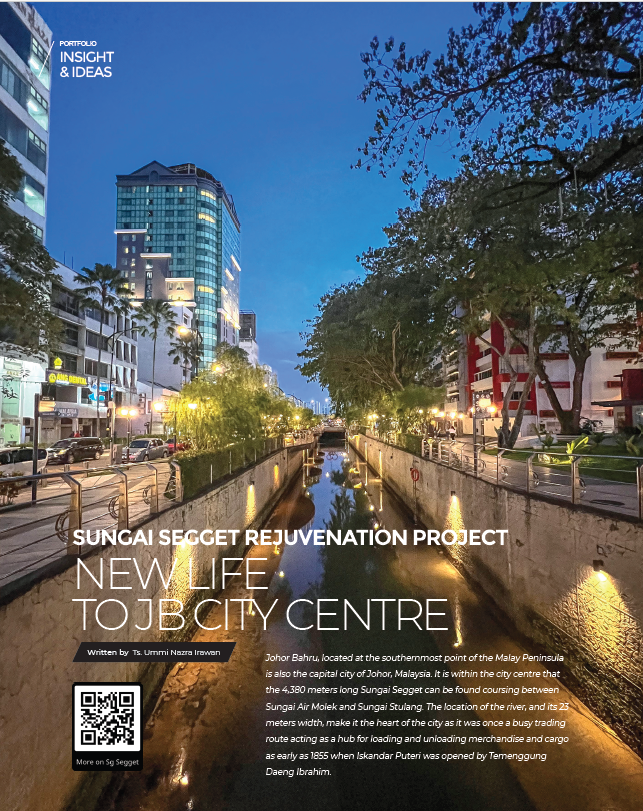Sungai Segget Rejuvenation Project: New Life To JB City Centre
Johor Bahru, located at the southernmost point of the Malay Peninsula is also the capital city of Johor, Malaysia. It is within the city centre that the 4,380 meters long Sungai Segget can be found coursing between Sungai Air Molek and Sungai Stulang. The location of the river, and its 23 meters width, make it the heart of the city as it was once a busy trading route acting as a hub for loading and unloading merchandise and cargo as early as 1855 when Iskandar Puteri was opened by Temenggung Daeng Ibrahim.
History
Inevitably, rapid economic growth in the city centre had turned Sungai Segget into the dumping ground for domestic waste from markets and shops around it and sewage waste from the squatters living along the river. Since the 1970s, the river has been graded Class IV for its dirty and stinking water.
Every day, the Johor Bahru City Council (MBJB) disposes approximately 3 tons of garbage collected from 26 rivers around Johor Bahru. Various types of waste have been dumped into the river from sewage waste to large-scale un-used equipment waste such as old washing machines, used wardrobes and damaged refrigerators causing the river to become dirtier and smellier. This rampant disposal of waste had also resulted in clogged drainages and subsequently cause many flash floods within the Johor Bahru city centre.
Anyone passing through the Sungai Segget area will feel nauseous due to the stench emanating from the river. From a social and economic point of view, this had driven away locals and tourists alike, especially from neighbouring Singapore, who then opted to skip the area in Johor Bahru city centre. The pollution had become so serious that in 2005, Sungai Segget was covered up to prevent more pollution, but the odour still lingered. At that time, a more detailed solution was needed to reduce the pollution in the river and mitigate flash floods.
With Sungai Segget running parallel to the busting main city bus route along Jalan Wong Ag Fook, a 1.4 km long and 25 meters wide pedestrian walkway covering the river known as ‘Legaran Segget’ was constructed to conceal the view of the polluted river. Unfortunately, water pollution and stench remain a problem.
In 2014, ‘Legaran Segget’ was stripped open in 2014 to allow for studies to be conducted to solve the odour pollution and flash flood issues once and for all.
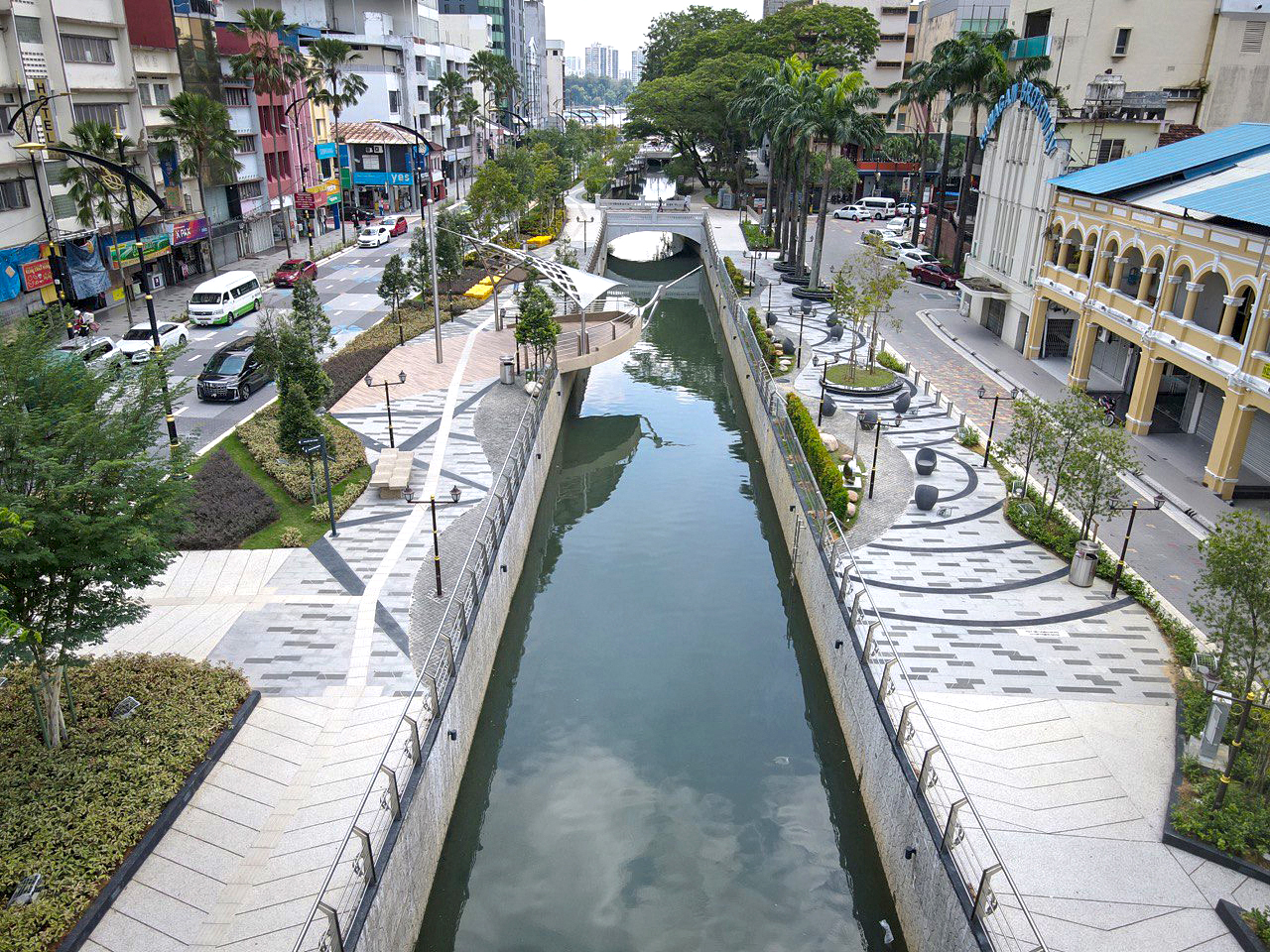
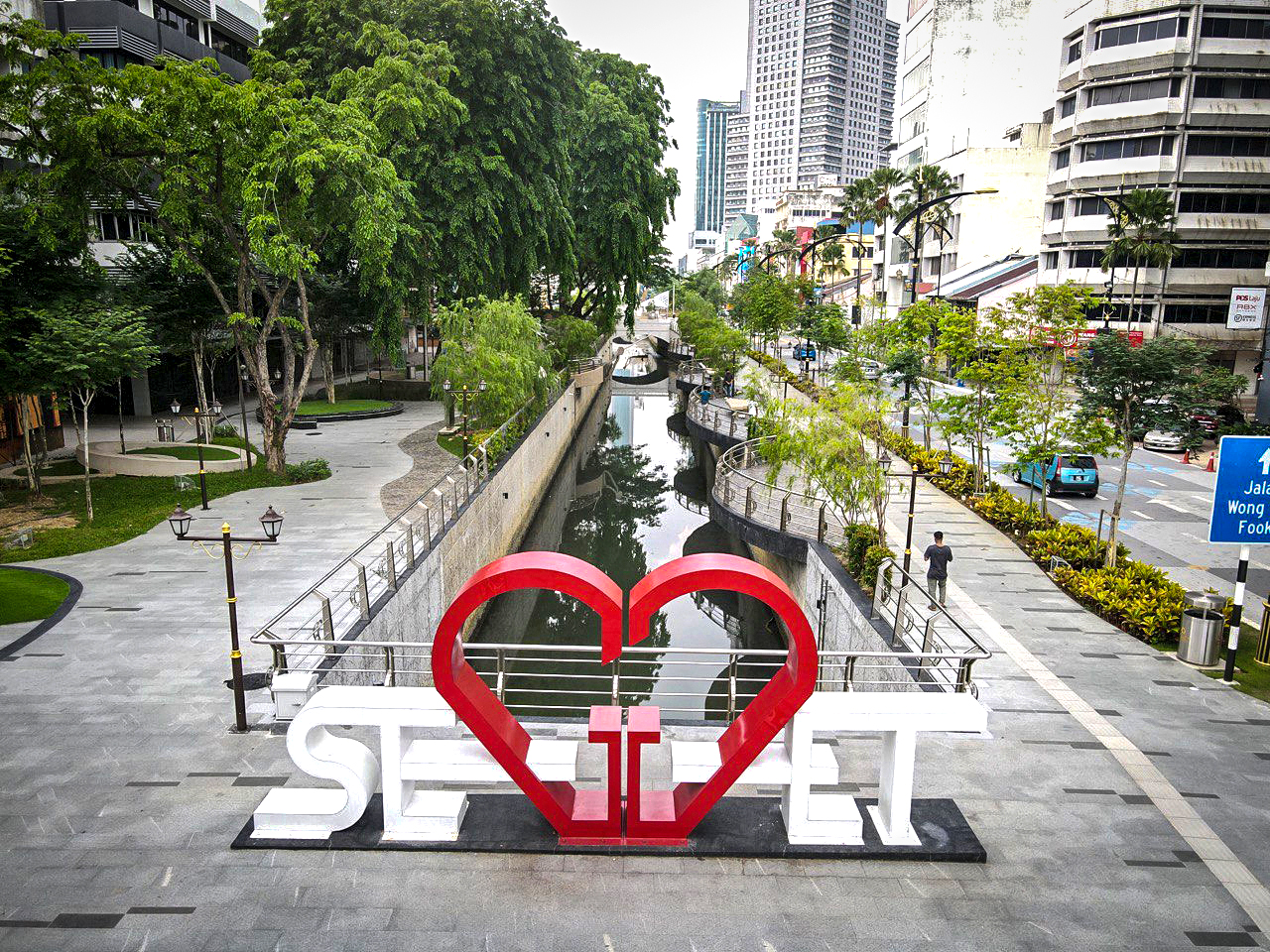
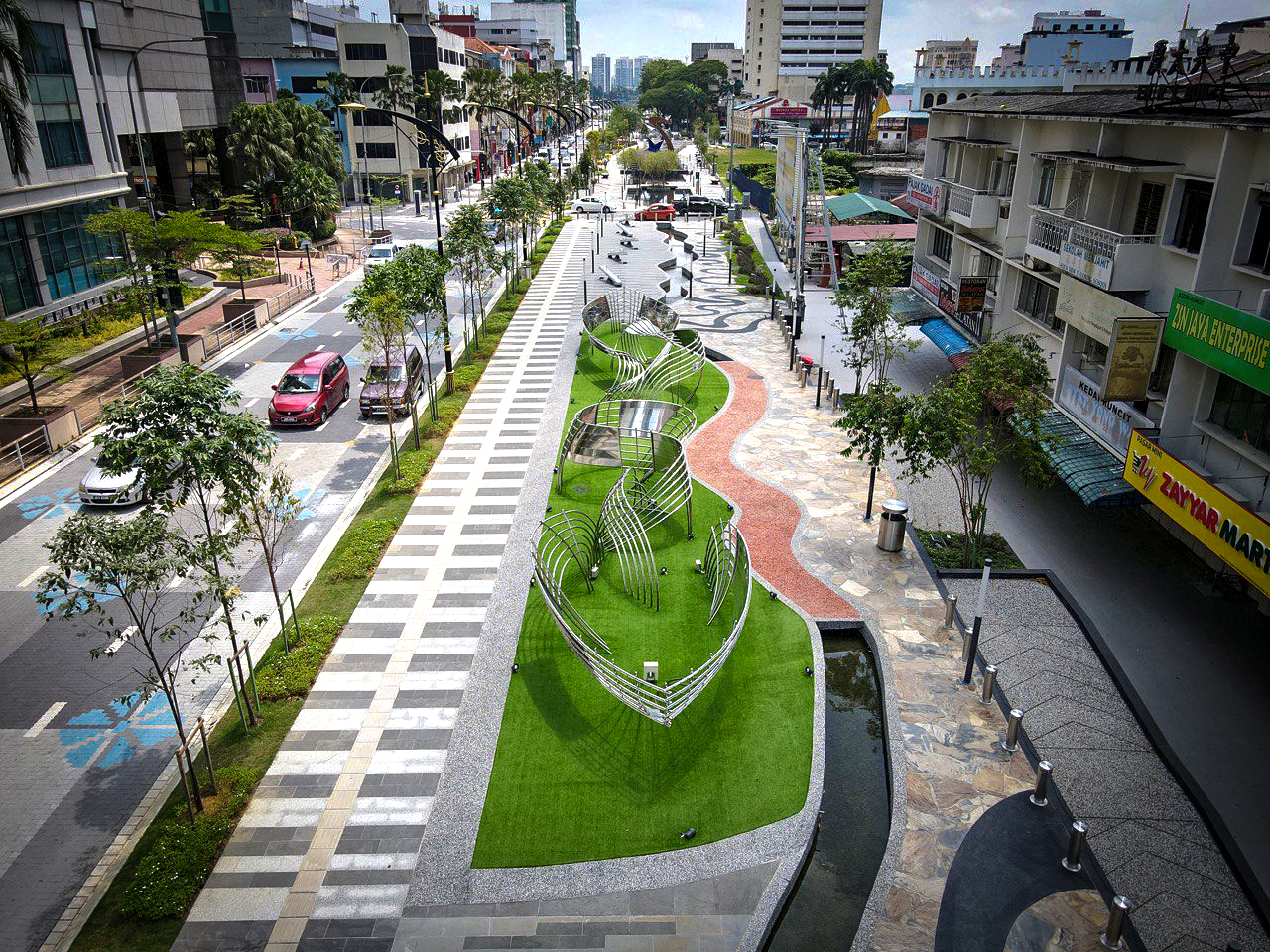
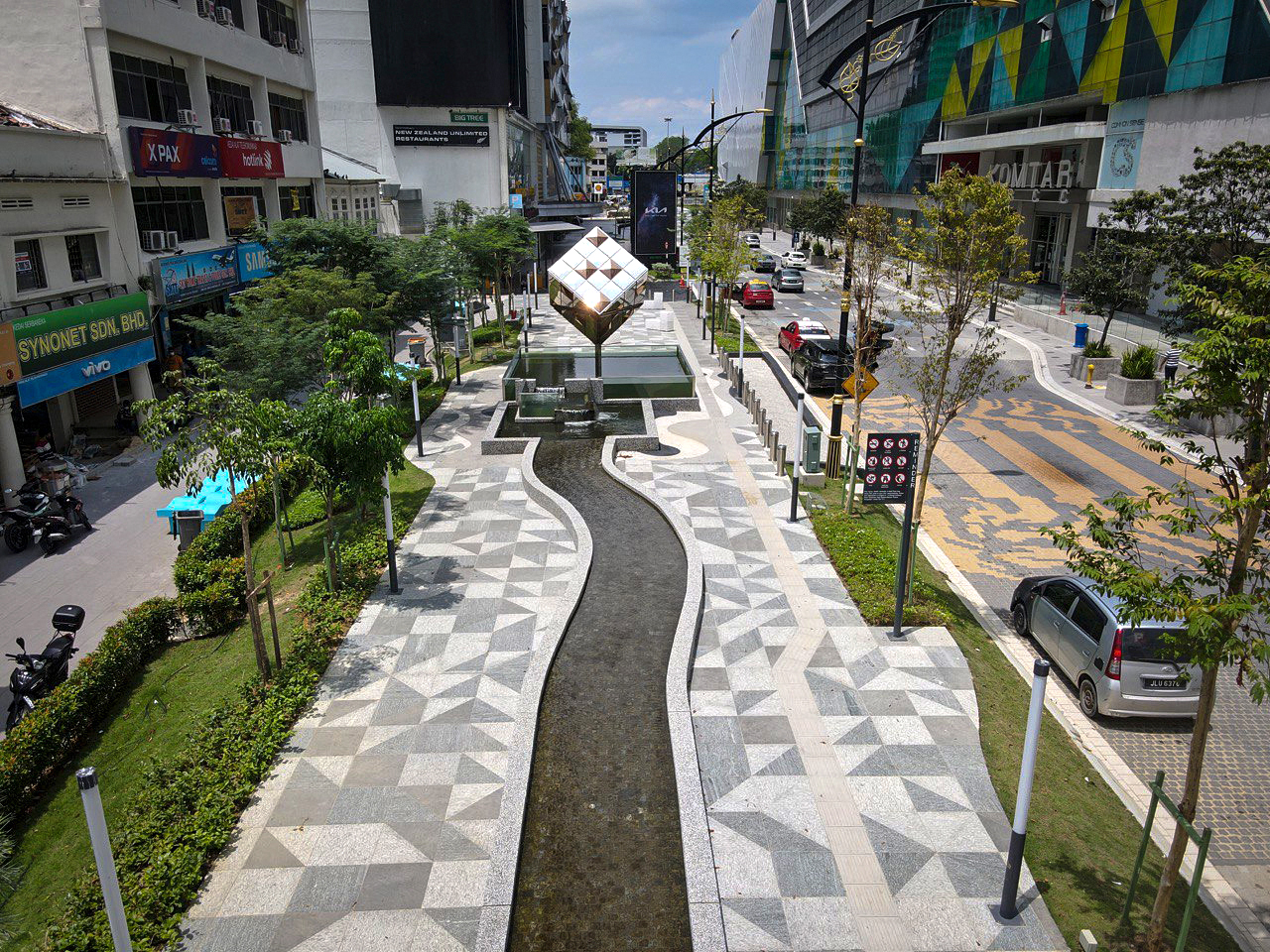
(FROM TOP TO BOTTOM) The development of Sungai Segget highlights different landscape concepts such as the Zone 1: Historical and Heritage; Zone 2: Cultural and Arts as well as Zone 3: Fun and Leisure zone.
Development by Iskandar Regional Development Authority (IRDA)
Iskandar Malaysia’s development has a holistic approach that covers economic, social and environmental agendas. As such, projects that are driven by IRDA will have spill over benefits to the other sector and areas. The Sungai Segget Rejuvenation Project became one of the vital targets in Johor state started in 2012 took the example of other countries, such as Venice and Amsterdam.
In light of this strategy, the Sungai Segget Rejuvenation Project is carried out in three phases as below:
Phase 1
Centralised Sewerage Treatment Plant (CSTP)
Phase 2
Flood mitigation System Sewerage Network & New River Channel
Phase 3
Landscape Sungai Segget & Upgrading, Jalan Wong Ah Fook
Phase 1, from 2013 to 2017, was dedicated to improving the water quality of Sungai Segget because that was the most crucial step in achieving the conservation objective. This was done by uncovering all parts of Sungai Segget to improve the sewerage system flows at Johor Bharu city centre.
Through this phase, the river water is treated through the Centralised Sewerage Treatment Plant (CSTP) located at Wadi Hana, Johor Bahru and released back to Sungai Segget. This CSTP is the first integrated four-storey water treatment plant in Malaysia built with a height equivalent to a 12-storey building. Recently, the quality of the treated river water release from the CSTP has reached the ‘Second Class; level, according to Water Quality Index (WQI), and is safe for external usage and for aquatic life to thrive.
Phase 2 was also completed in 2017 focusing on mitigating floods in Johor Bahru city centre, well-known issue due to poor drainage system. To achieve this, the Flood Mitigation System, Sewerage Network and New River Channelling were also carried out simultaneously with Phase 1. From then on, there has not been any flooding incident recorded within Sungai Segget area.
Phase 3 was dedicated to beautifying the landscape around Sungai Segget and along Jalan Wong Ah Fook. For this, the landscape of Sungai Segget was divided into Historical and Heritage Zone, Cultural and Art Zone and Fun and Leisure Zone.
The design of the landscape incorporated ideas and feedbacks from various stakeholders from the government and private sectors, and the community form various engagement sessions. The information collected was then translated into a concept idea for the start of the Sungai Segget landscape beautification project.
The History and Heritage Zone pull visitors back to the old days as it contains a sculpture of a Bugis ship known as ‘Prahu Pansini’, a symbol that represents the time that Sungai Segget was the main route for merchant ships bringing black pepper at this area. The zone also displays gambus, a famous musical instrument related to Johor that act as an information board. Here, visitors can also take a photo with ' I Love Segget' icon.
The Cultural and Art Zone showcases a sculpture of the Jawi letter ‘JIM’ which means ‘Jauhar’, which also means gem in Arabic, and is the origin of the name of the state of Johor. There is a star in the middle of the structure, representing the foundation of Islamic pillars and to symbolise the ‘Southern Tiger’, the sculpture is decorated with a layer of striped finishing.
This sculpture is located on the ‘Jauhar water feature’ (Air Pancuran Jauhar) which is an artificial water element in the form of a 'water curtain'. In this zone there are also public art sculptures by local artists and there are giant seesaws that can be utilised by the public especially children. An interactive pool were fishes swim freely completes the offering that liven up the zone.
The Fun and Leisure Zone has become the main plaza with an artificial swale at the end of the ‘JIM’ sculpture. The swale is part of the route for the clean water that is discharged from CSTP built in Phase 1. An interactive parametrical tunnel that has various interactive lights is the main attraction in this area, especially at night. The design used in the new landscape is mainly taken from elements close to the Malaysia and Johor flavour and culture to preserve and conserve the diversity of heritage and culture assets in Johor. The incorporation of motifs used in ‘Tenun Johor’ clothes such as ‘Tampuk Manggis’ and ‘Lada Hitam’.
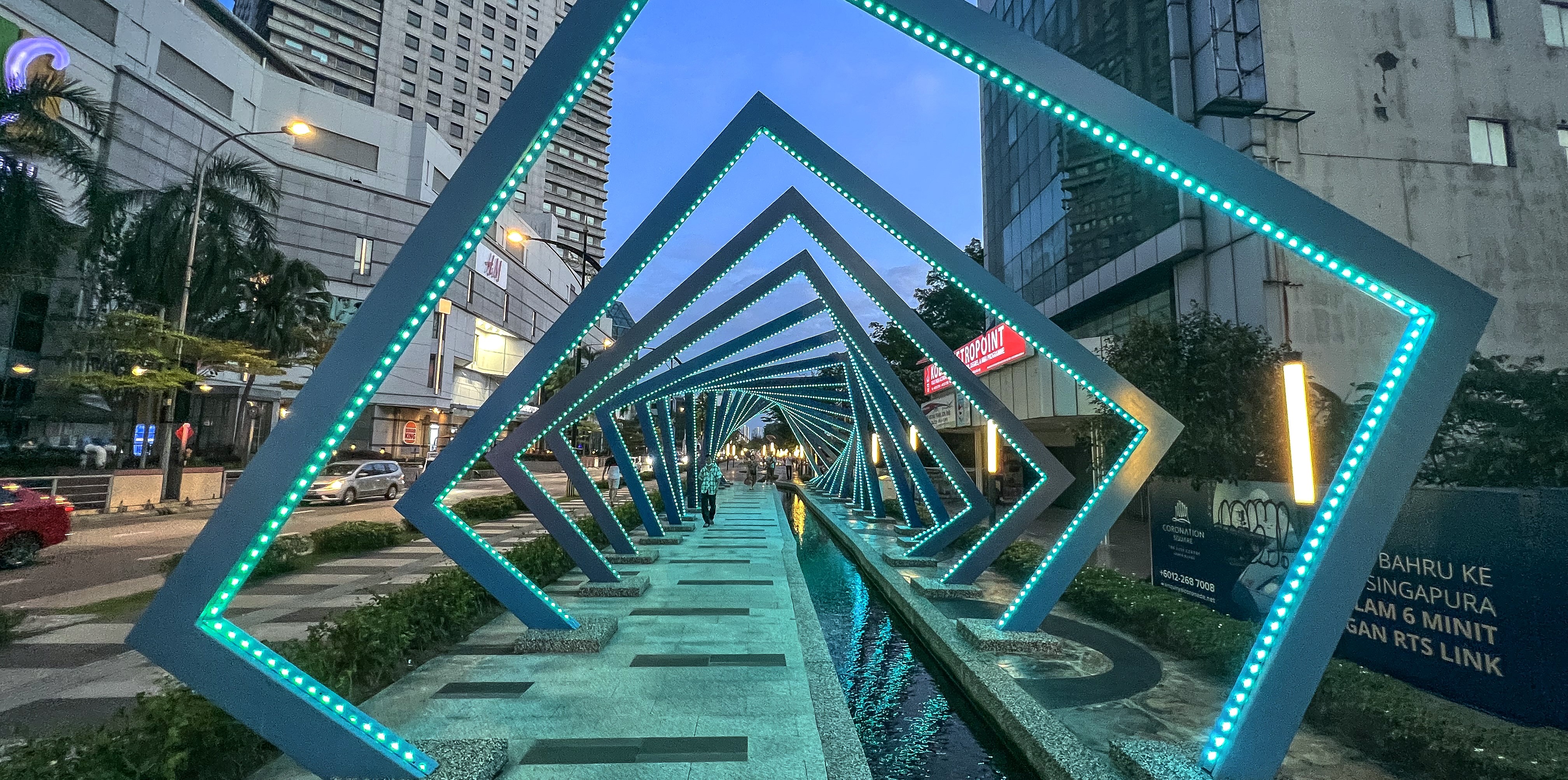
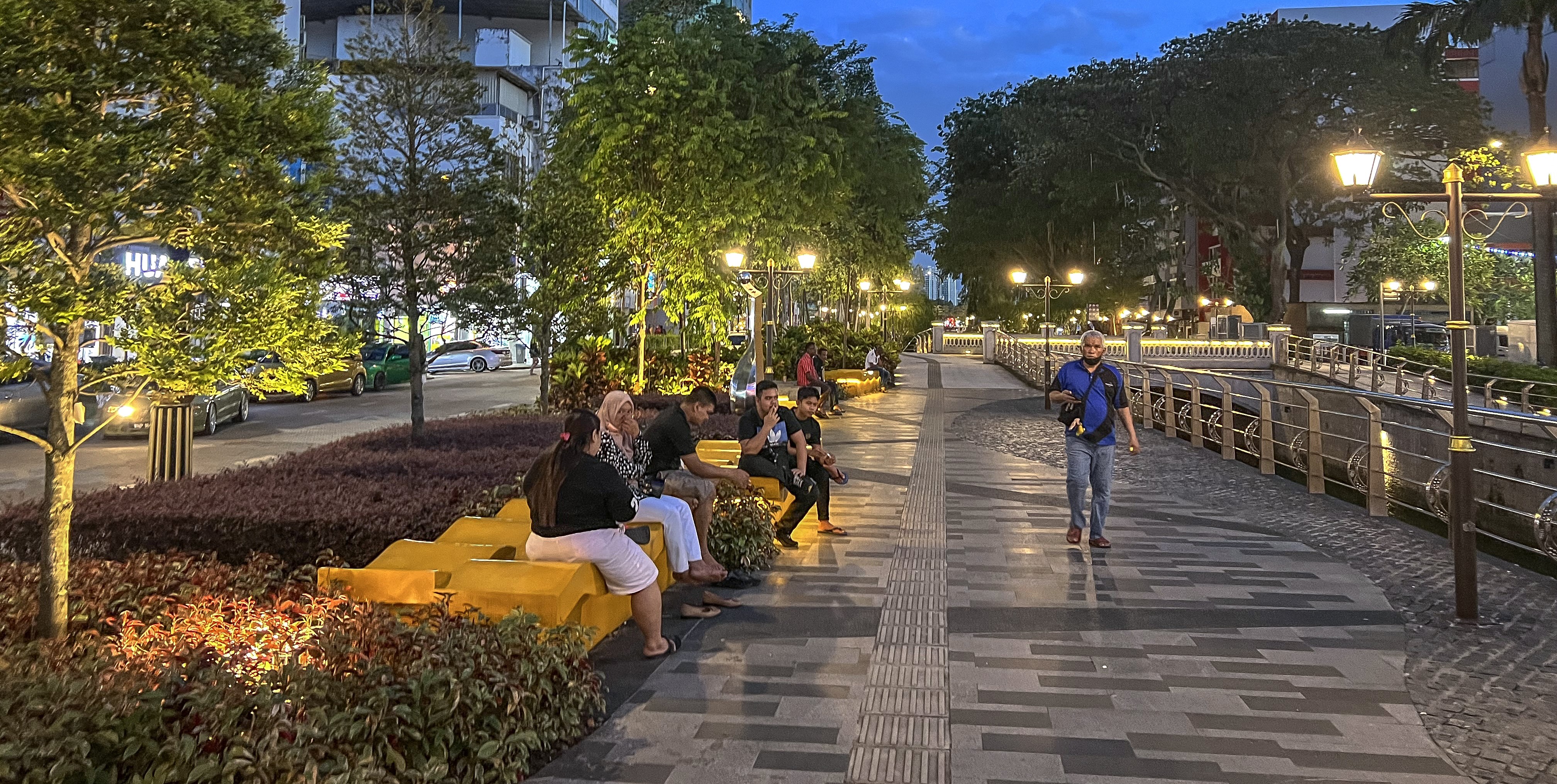
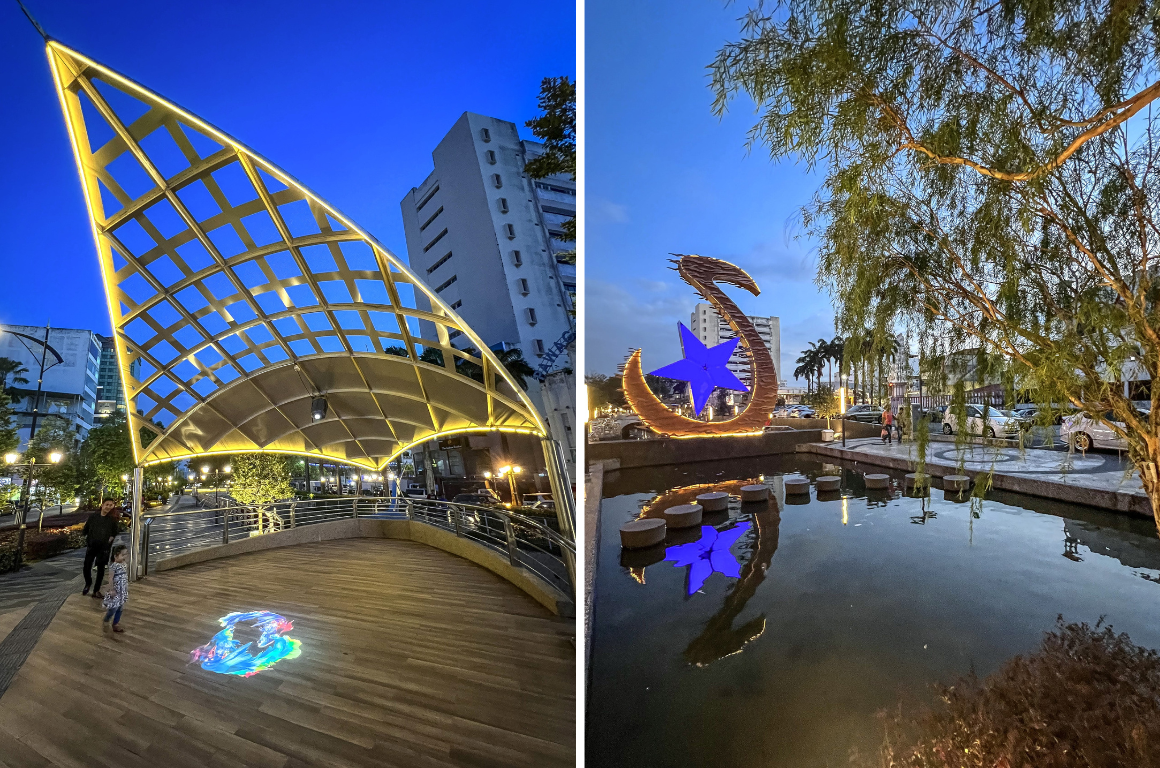
Read the full article here.


